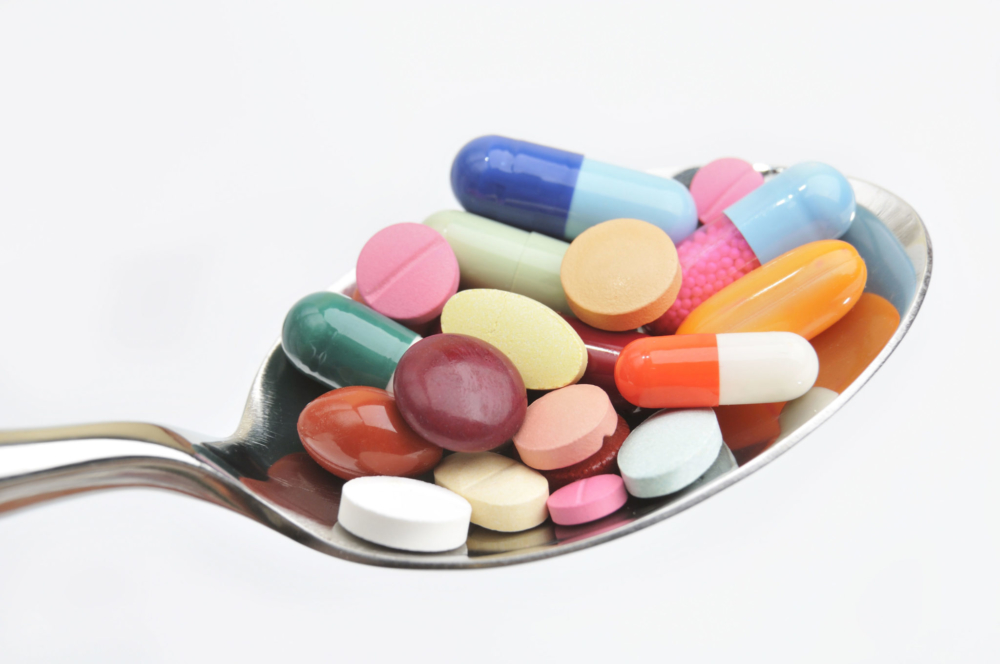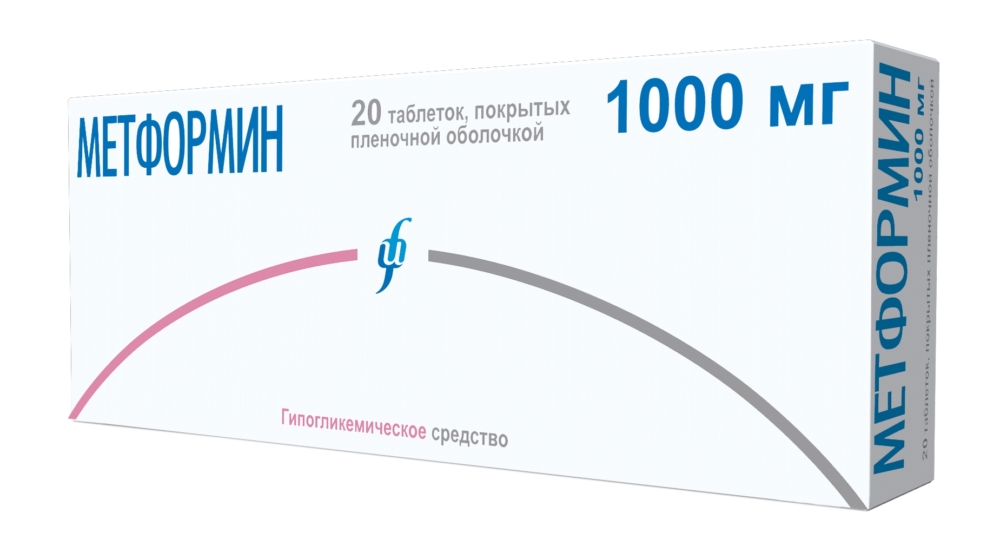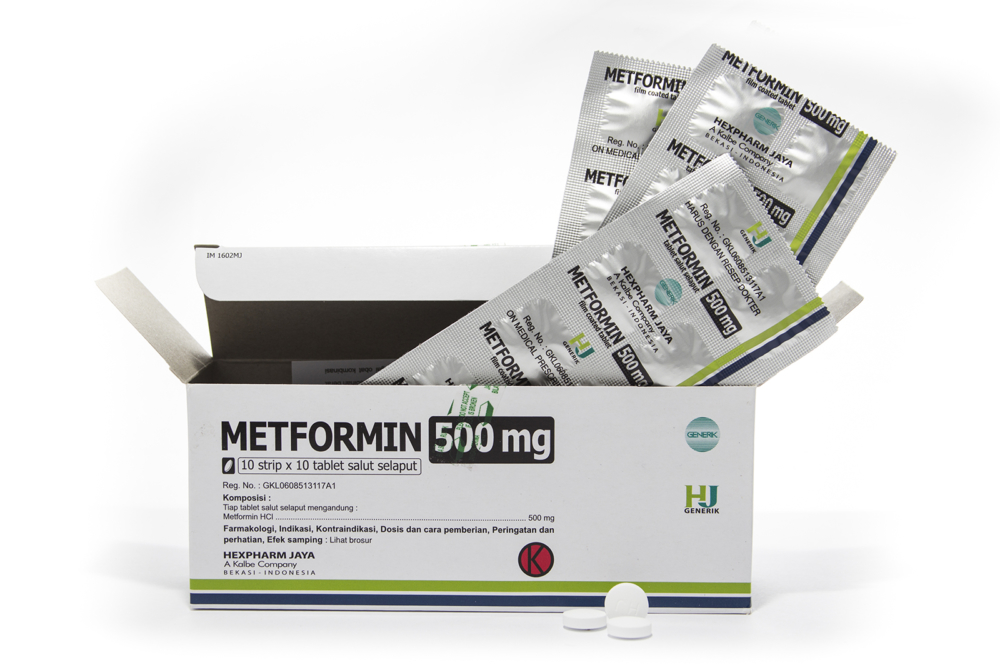Indications for the use of Metformin are known to every doctor to an endocrinologist. The medication is intended to lower blood sugar levels. It is realized in the form of tablets with various dosages exclusively after providing a prescription form from a specialist. It is used to treat type 2 diabetes mellitus and other diseases associated with the immunity of the hormone insulin.
Material Content:
The composition of the drug
The medication in question includes one active component of metformin hydrochloride, and additional substances, such as:
- polyvinylpyrrolidone K 90;
- corn starch;
- crospovidone;
- magnesium salt of stearic acid;
- talc.
The composition of the white enteric coating includes talc, titanium dioxide, Macrogol 6000, Eudragit L 100-55 and isobutanoic acid.
Pharmacological actions and pharmacokinetics
Metformin is a hypoglycemic drug that reduces the amount of glucose in the blood and increases the body's tolerance to it. And also under the influence of the medication, the susceptibility of receptors to insulin increases.
The active substance does not affect the pancreatic tissue responsible for the production of the hormone insulin, and does not provoke a critical decrease in blood sugar.
After taking the drug, the amount of fat in the blood decreases, metabolic processes normalize, and the rate of fibrin splitting increases.
After the doctor has prescribed Metformin, the patient can observe a decrease in fat mass and weight loss.
The active component of the tablets is absorbed into the body by only 60% and is evenly distributed throughout the tissues of the body after 2.5 hours. When taking the medication during the meal, the absorption rate increases significantly.
Metformin is excreted unchanged in the urine after 9-12 hours. In case of violation of the functions of the urinary system, the active component can accumulate in the body and lead to serious anomalies associated with excess volume of the active component.
Indications Metformin
Metformin tablets are used to treat non-insulin-dependent diabetes mellitus when specialized dietary restrictions have not given the expected result.
The medication is recommended for patients with obesity of any severity and people with normal body weight. It is prescribed for both adults and children from 10 years in the form of self-treatment. Or as part of complex therapy in conjunction with other medical devices that reduce the concentration of glucose in the blood or insulin.
Specialists can prescribe medication for other pathologies, for example, with polycystic ovary, but only if there are serious indications. Independent use of the drug is prohibited.
Instructions for taking and dosage in tablets
The use of a medication is required to be carried out simultaneously with food or immediately after a meal. The frequency of administration and dosage is interconnected with the form of release of the drug and the severity of the disease.
When conducting therapy exclusively with Metformin, the initial adult dosage is 500 mg, the frequency of administration is 1-3 times in 24 hours. And also let us take a dosage of 850 mg 1-2 times in 24 hours. If indicated, the dosage can be increased to 3 g in 24 hours.
Children over 10 years of age are prescribed a dose of 0.5 g 1-2 times in 24 hours or 0.85 g once a day. If necessary, the dosage can be increased to 1000–2000 mg per day, divided into 2-3 doses.
After 2 weeks from the start of therapy, the prescribed dosage needs to be adjusted based on the results of a blood sugar test.
If type 2 diabetes mellitus is treated through combination therapy with Metformin, the initial dose is 0.5–0.85 g 2-3 times in 24 hours. The amount of insulin administered is regulated based on the results of a blood test.
Important! During the treatment of diabetes, experts recommend a periodic blood test for glucose levels using a home blood glucose meter with one-time test strips. If high rates are detected, you should immediately visit a doctor.
During pregnancy and lactation
Specialists did not conduct adequate studies of the effects of the active component of the drug on the developing fetus, but it was revealed that it penetrates the histohematological barrier. The use of a therapeutic agent is permissible only if absolutely necessary, when the benefit for the mother is many times greater than the risks for the child.
Metformin penetrates the composition of breast milk in the amount of 1/3 of the concentration in the blood plasma of the mother. In this regard, it is not recommended to combine breastfeeding with the use of a medication.
Scientists have found that the medication does not provoke cell mutations and does not affect a woman's ability to give birth to a viable baby. But a pregnant woman using a drug should be under the strict supervision of a gynecologist and endocrinologist.
Drug interaction
Metformin reacts with various drugs, which may require a change in the dosage of the drug consumed in the treatment of type 2 diabetes mellitus, including an insulin-dependent form.
With the joint use of the following drugs with the medication in question, the latter has a more pronounced effect:
- Acarbose;
- NSAIDs;
- IMAO;
- Oxytetracycline;
- ACE inhibitors
- Cyclophosphamide;
- Clofibrate.
The instructions for use report that the use of the therapeutic drug in combination with diuretics, glucagon, thyroid hormones, female hormones, nicotinic acid, calcium channel blockers, isoniazid and somatostatin leads to a decrease in the therapeutic effect of the medication in question.
Cimetidine when interacting with metformin leads to the development of lactic acidosis.
Alcohol compatibility
Biguanides (drugs used for the treatment of diabetes mellitus) when interacting with drinks containing alcohol can provoke complications associated with an increase in the volume of lactic acid in the blood.
Contraindications, side effects, overdose
A drug that reduces blood glucose is prohibited in these conditions:
- ketoacidosis;
- diabetic precoma or coma;
- abnormal urinary system;
- pathologies occurring with a risk of developing renal failure;
- diseases that can provoke heart or pulmonary failure;
- injuries or surgical procedures that require insulin therapy;
- pathological work of the liver;
- alcoholism or alcohol poisoning;
- the need for radiography using a contrast medium (2 days before and 2 days after the procedure);
- lactic acidosis;
- a diet that includes less than a thousand kcal;
- pregnancy
- lactation;
- inability to perceive the components of the medication.
Experts do not recommend treatment with Metformin in patients older than 60 years who are engaged in active physical activity, since the risk of developing lactic acidosis increases.
Adverse reactions that occur when using the medication in question:
- violation of the functions and composition of the blood;
- abnormalities in the liver;
- a change in the perception of taste buds;
- allergic manifestations;
- an increase in the level of lactic acid in the blood;
- violation of the digestibility of B vitamins;
- general deterioration in health;
- hypoglycemic coma.
As a rule, the listed pathologies arise when using the medication in the wrong dosage or in the presence of contraindications.
If negative manifestations are detected, it is urgent to consult a specialist for symptomatic therapy and review of treatment tactics.
Consumption of a drug at a concentration higher than recommended by a specialist can lead to the development of lactic acidosis incompatible with life. A similar abnormal condition develops as a result of the use of a medication with impaired functioning of the urinary system.
Lactic acidosis is manifested:
- bouts of nausea and vomiting;
- upset stool;
- decrease in body temperature;
- pain in the muscles and abdominal cavity;
- tachypnea;
- ataxia;
- violation of the perception of reality;
- coma.
In people of different age categories, taking the medication in question can lead to an excessive accumulation of potassium in the body.
Analogs of Metformin
Analogs of Metformin should be selected by a specialist on the basis of indications and individual characteristics of the human body. Medications can have an identical active substance, but the difference in auxiliary components can greatly affect the state of the body.
Preparations similar to the active component:
- Formin;
- Bagomet;
- Novoformin;
- Metformin Richter;
- Merifatin;
- Siofor;
- Nova Met;
- Formin Pliva;
- Glucophage;
- Sofamet;
- Metformin Teva;
- Metfogamma;
- Metformin long
- Gliformin.
Metformin 500 mg tablets and analogues are sold in pharmacy chains exclusively with a prescription form from a specialist.
Neglecting the instructions and recommendations of a doctor can cost a person not only health but also life. Many complications from improper administration of the drug are fatal.
- Katya

















